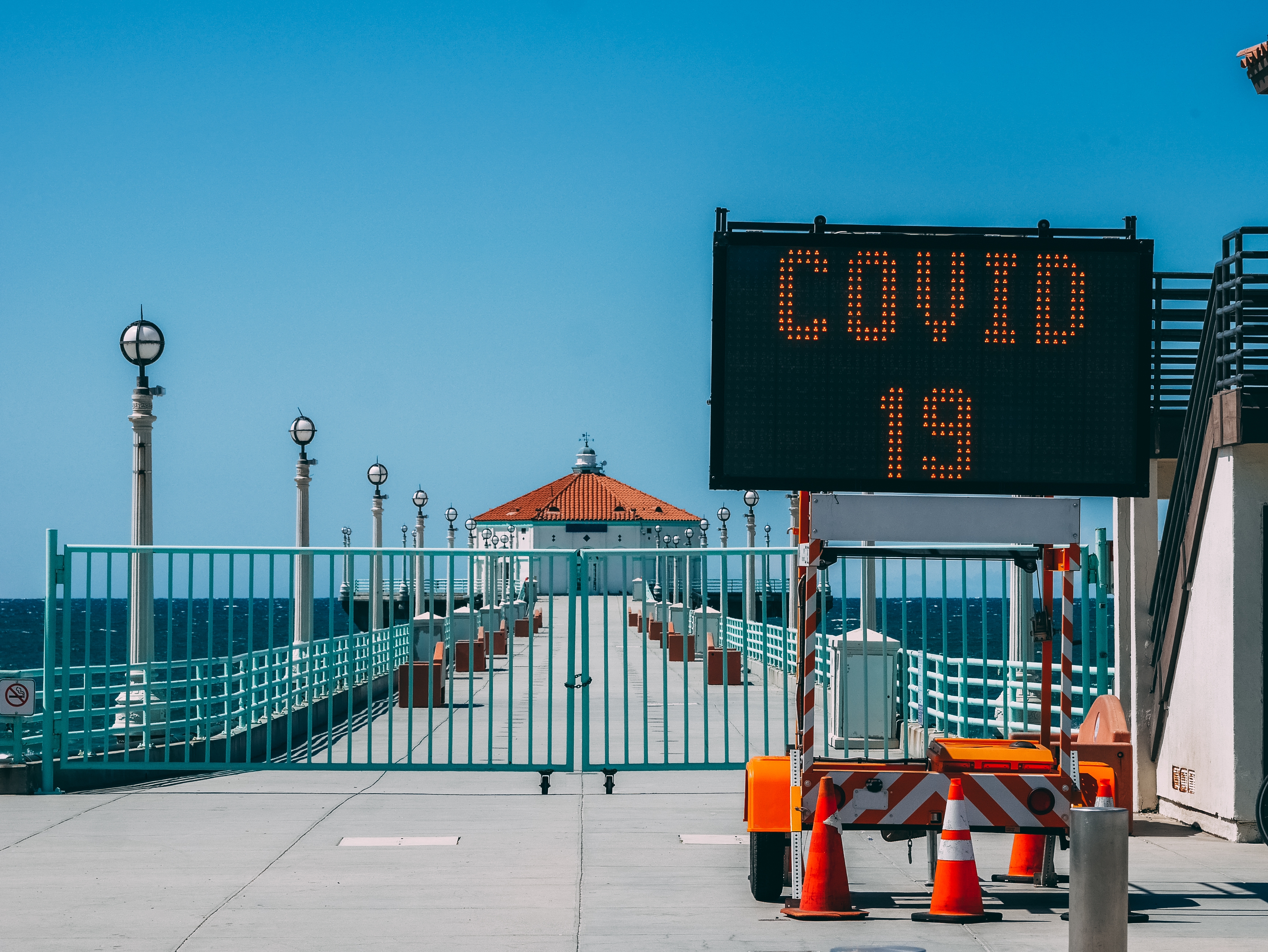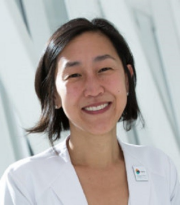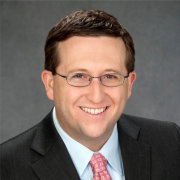The third episode of the podcast features an interview between Sam Glick, Oliver Wyman, and Dr. Alice Chen, California Health and Human Services, focuses on the immediate response to the pandemic in California, one of the hardest hit states of the US, the lessons learned so far and whether a balancing act exists between public health and the economy.
TRANSCRIPT:
Erick Gustafson: We are in the seventh month of the Coronavirus pandemic and many nations as well as the states across the U.S. are beginning to open larger segments of their economies and in some instances pushing pause where there's a surge in cases. Public officials and companies are applying the lessons they've learned so far and planning for what comes next. I'm Erick Gustafson, Chief Public Affairs Officer at Marsh & McLennan and welcome to the Marsh & McLennan Advantage a podcast featuring insights from the leading professional services firm in the areas of risk strategy and people.
In our last episode, we examined some possible long-term impacts of COVID-19. Now we'll look at the immediate response to the pandemic from one of the U.S.’s hardest hit by the pandemic, California. Sam Glick, a Partner in Oliver Wyman's Health and Life Sciences Practice spoke with Dr. Alice Chen, Deputy Secretary for Policy and Planning at the California Health and Human Services Agency. They discuss California's response, the lessons they've learned so far, and whether a balancing act exists between public health and the economy as well as the disease's impact across racial and ethnic groups.
Sam Glick: The coronavirus pandemic has presented our society with one of the greatest challenges in recent memory. Governments around the world and at every level are operating on a massive scale to stop the spread of COVID-19, treat the sick and prepare our societies to transition safely back to something resembling a normal life. In order to wrap our heads around the government response today we're talking about California's efforts to combat the virus and the related economic fallout. I am Sam Glick Partner in the Health and Life Sciences Practice at Oliver Wyman. And I'm delighted to be joined today by my friend Dr. Alice Chen, Deputy Secretary for Policy and Planning at the California Health and Human Services Agency. Alice is going to tell us a bit about the work she's been doing and about what the state of California has been doing to protect 40 plus million Californians from COVID-19. Alice, thank you so much for joining us today.
Alice Chen: Oh, it's my pleasure. Thanks for having me.
Sam Glick: So, Alice you took this job by my count about five or six months before COVID became a major crisis. Tell me a bit about how you came to be the Deputy Secretary for Policy and Planning and how you came to be involved in the COVID response.
Alice Chen: Of course. It really does seem like a lifetime ago. I joined the Newsom Administration because it felt like a unique opportunity at the time to have a governor who was really interested in health and health care and affordability; and we were in a position where now in retrospect the tail end of the longest economic expansion in modern history with the government finances being in a good place there are a lot of innovative ideas and initiatives to try to move forward with healthcare transformation and making sure that healthcare serves all Californians.
Sam Glick: Got it and so, how did you get involved in COVID?
Alice Chen: When COVID appeared, obviously it's unprecedented for everyone, it was all hands on deck and so, I think actually the first thing I was called to do is work on waiving cost sharing for COVID testing which was very, very early on and I think we were one of the very first states to do that; but rapidly because of my background in health systems and delivery systems got pulled into really planning for hospital surge because that was the most imminent and dire need at the time early in the pandemic when some of the modeling forecasts were showing just orders of magnitude of excess hospitalizations over existing bed capacity.
Sam Glick: Got it and then that evolved as I know. What kind of work has your team been doing lately?
Alice Chen: Thank goodness that we haven't needed the excess capacity that we built. At the same time we understand that we're not out of the woods and so what has evolved is as it became clear that California had successfully flattened the curve we really weren't seeing the excess mortality that you were seeing on the hospitalizations and mortality that we've seen in our sister states on the east coast. We came up with a six-indicator framework for how to move forward responsibly in reopening society and those include efforts that have been just enormous lists by really talented people working around the clock. So standing up sufficient testing. We have a testing task force, contact tracing, ability to protect our most vulnerable populations, particularly people in sniffs but not just in sniffs, people who are in other congregate settings, homeless shelters. Making sure that we actually still have a plan for hospital surge. Keeping tabs on what's happening in therapeutics and then really doing very sector specific guidance in terms of how to open things and then overlaying that all or maybe underpinning it all is a group that's really looking at data metrics, data, and what metrics we need to be following on a county and regional level to make sure that we're keeping tabs on things and can try to titrate up our NPIs up and down, our non-pharmaceutical interventions as the pandemic progresses and evolves.
Sam Glick: Got it. Got it. So where are we now in California and I realize there may be one answer to that given how diverse the state is.
Alice Chen: Exactly. We talk about California being a nation state and truly I mean if you just overlaid California on other parts of the state we would stand many different states. There are many different and it is really variable. Some counties are very sparsely populated. We've had several counties that have not had any cases to date. Others, particularly in the bay area early on and now in southern California are really dealing with quite high volumes of cases. Even within a county, there can be variations.
So where we are I would say we're in a liminal space right now. We've averted the worst initial case scenario. We also know based on the science that as we start moving the virus will spread and there will be more cases and more and more morbidity and mortality and the question is how do we do this in the most responsible way possible and also partner with our local counties and regions because frankly they in many ways are best situated to know what's going on the ground.
Sam Glick: Yeah, I hope so. And a lot of our listeners run businesses, some of them healthcare businesses, some of them not. What about the private partnership part of that? You've got an audience here of CEOs of businesses of all sizes. What can they be doing to help combat COVID?
Alice Chen: On the private sector side and in healthcare again I'll say that I've been really impressed by all of the hospitals that have really stepped up and offered partnership and in standing up alternate care sites, staffing, supplies really trying to come together to serve community need. Also being thought partners in terms of data and policy. Just focusing for a minute just on healthcare I think we're really trying to expand that scope as we look to the fall and potentially even earlier to not just involve hospitals but really looking at the entire ecosystem and what assets we have whether it's community clinics or ambulatory surgical centers, physician groups. How do we actually bring everyone in, in a way that allows us to both address surges from COVID and also not get ourselves in the same situation of deferred and delayed care? Which I think, I fear will have significant consequences particularly for vulnerable populations. I think some of those gaps just like in the education sector and economic sector may never be closed for some groups so really being proactive about addressing those.
I mean in the private sector I think that's also been interesting and heartening there have been so many companies that have reached out to the administration to pivot their core work in service of the pandemic whether it's by producing PPE or converting ventilators, or trying to create apps to do contact tracing and help with occupational tracking and being able to reopen businesses. It's a little challenging sometimes because we have so many people approaching us it's hard to figure out how to coordinate all that. I will say that there's another group, and I'll just pivot for a second, of folks who have approached us about wanting to support things philanthropically and I think there what would be really helpful is to be willing to come together and pool our resources.
Sam Glick: Yeah Alice I know you focus primarily on public health and keeping all of us in California healthy but there are economic concerns about the pandemic. How does California balance those concerns and how have you been tackling those questions with the governor's task force and others?
Alice Chen: That's an area I have not been intimately involved with but what I can say is it is absolutely front and center. I mean, it is even from the very beginning and I think even when you talk to someone like Sarah Cody in Santa Clara who really was the person who sounded the alarm there was a clear understanding that you're balancing it's not health versus economy it's really because in many ways the economy is health. We know that loss of jobs, elimination of generational wealth particularly for lower income folks who are just getting a toehold into the middle class has potentially long-term repercussions in terms of their health and wellbeing and mortality even; and so, I think from the very beginning one primary focus was to avoid the hospital surge that we saw in Italy and New York. With that said as soon as we realized we had avoided that it was a very hard pivot to how do we again open up the economy, make sure that the kids get education, that our small businesses aren't particularly impacted in a way that's responsible. And so, I think that's been the discussion very early on and I think you'll see that is the underlying principle and framework is how do we actually do this in a responsible way knowing that there is no perfect way and there is no ability to. It's all about harm reduction. There is no way to actually prevent 100% transmission in so far as we have people out and about mobile in society and interacting.
Sam Glick: Right. Well, and one of the things you and I have talked about and one of the things that worries me a lot and I know you too is the inequality and the health inequities that are revealed by this pandemic. And the jobs data actually just came out today and we have the same economic inequities. I mean, we know that African Americans have been hit hardest by COVID but we know today that those who identify as Hispanic have an unemployment rate that is many points higher than the average as a result of this crisis. What's California doing, what are you doing about these inequities and what are your worries there?
Alice Chen: My biggest worry is that this doesn't stay front and center because clearly obviously in the context of George Floyd and all of the protests and societal attention to disparities at large I think there is an opening here but I think we do need to be able to translate it into structural change. It's no surprise, we work together in the San Francisco City safety net, and it's no surprise to anybody who has worked in a safe net setting or paid attention to the contours of healthcare certainly here in California where a third of people are covered by Medical that we have deep disparities that were just on edge; and so, COVID really tipped it over in so many different ways.
And I think the infection rate among Latin X populations in particular but the mortality rates in African Americans, Native American communities, Pacific Islander American communities, the at least in San Francisco disproportionate number of Chinese American immigrants. From the very early stages of the pandemic we were looking at the data broken down by race and ethnicity and realized and actually I reached out to you about this is that our data systems weren't capturing this right. And so the first order of business is actually even knowing how bad the disparities are. We suspected from the get go that this is how it would play out just given who essential workers are and the underlying comorbidities in different communities but it's important to have that data in order to be able to target different communities. I think in terms of some of the interventions many of the initiatives that have been stood up whether it's project Room Key or Great Plates or even the testing sites that we've put out have really had a lens of how do we make sure our most vulnerable are served.
Sam Glick: I hope so and grateful for all the work you're doing. Alice I might close by asking you the question I ask everybody. If you had all the time, money, influence in the world to change U.S. healthcare what's the one thing you'd do?
Alice Chen: If I had a magic wand I'd take the 18% of GDP that we spend in healthcare and frankly redirect a lot of it to poverty reduction and early childhood investment. Because we actually don't need all the healthcare that we have. If we actually had more of a social compact, if we actually really focused on prevention and keeping populations healthy, I think that would be the better ROI frankly.
Sam Glick: Yeah if we spent a little more time and money taking care of each other we'd probably spend a lot less having to fix each other.
Alice Chen: Yeah.
Sam Glick: Yeah.
Alice Chen: Exactly.
Sam Glick: Well Dr. Alice Chen thank you for joining me today. Thank you for everything you're doing for California. I'm very grateful and keep up the good work.
Alice Chen: Thank you so much.
Erick Gustafson: Renewed spread in some parts of the country including California makes it clear that we have a long way to go. However, we are more equipped than ever before to handle the ravages of the disease. Armed with analytical tools, including Oliver Wyman's own pandemic navigator we can help identify trends early and build our intelligence on the way the virus advances. We have more lessons to learn before the threat of COVID-19 is behind us but the ground covered since January has shown that if we are committed we have the capacity to save lives and livelihoods. I'm Erick Gustafson and thank you for listening to the Marsh & McLennan Advantage.
EPISODES
-
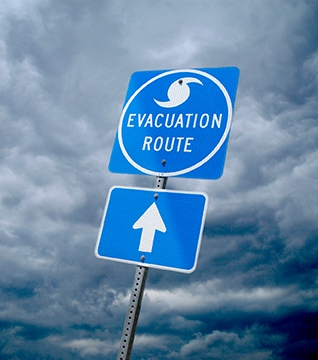 Read More
Read MorePODCAST Climate Resilience in Focus In this inaugural episode of The Marsh & McLennan Advantage podcast, experts from throughout the firm discuss risk factors and responses to the changing climate, through the lens of the public and private sectors as well as the world of investing. -
 Read More
Read MorePODCAST Risk & Resilience in the Time of COVID-19 The coronavirus is reshaping norms across the society and economy, tune into the second installment of the Marsh & McLennan Advantage podcast as our experts discuss national resilience, the rise of telehealth and the post-COVID-19 world. -
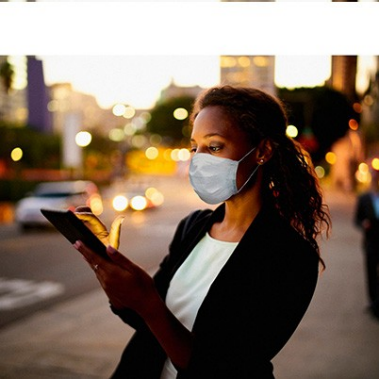 Read More
Read MorePodcast Digital Opportunities & Risk During COVID Times The pandemic has forced a rapid change in daily life. Tune in as experts across the enterprise discuss the evolution across the digital landscape.
